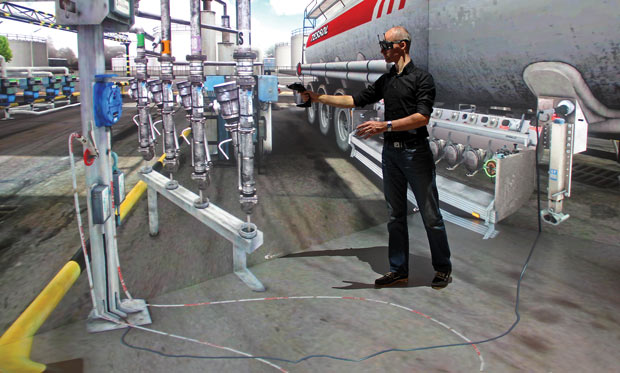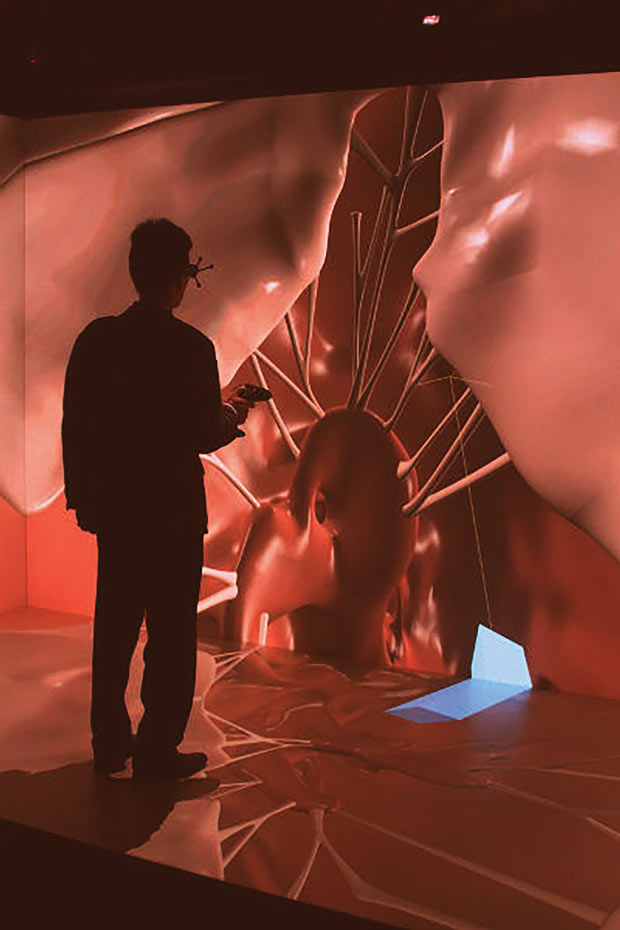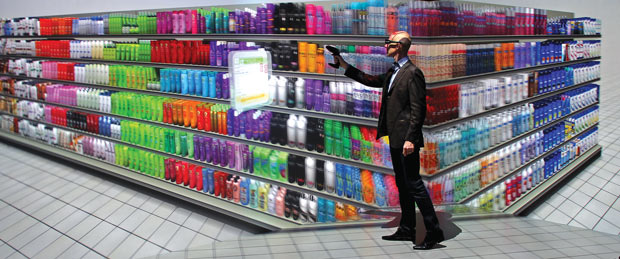When Reality Becomes Virtual

Dassault Systèmes’ Integrated Plant Engineering solution helps develop a virtual twin of an actual plant before it’s built or modified. Image courtesy of Dassault Systèmes.
Latest News
March 1, 2016
 Dassault Systèmes’ Integrated Plant Engineering solution helps develop a virtual twin of an actual plant before it’s built or modified. Image courtesy of Dassault Systèmes.
Dassault Systèmes’ Integrated Plant Engineering solution helps develop a virtual twin of an actual plant before it’s built or modified. Image courtesy of Dassault Systèmes.Part of Disney Enterprises’ preparations to launch “Star Wars” attractions in its theme parks, included creating them digitally and using projectors and 3D glasses to see what they’d be like in reality—virtual reality that is.
Disney has worked with Dassault Systèmes and its virtual reality (VR) technology as a tool to prototype designs to help accurately create the product virtually before they invest in the real deal. For many companies, virtual reality is one of the next big things to embrace. For design engineers, it provides a means to greatly improve the effectiveness of large-scale designs, while reducing risk and total cost of ownership.
Reduce Time and Cost
David Nahon is the director of the Immersive Virtuality Lab at Dassault Systèmes in Paris. He says over the past two decades, we have seen a majority of virtual reality (VR) adoption in the automotive or aerospace industries as a way to replace physical prototyping processes, reducing time and cost spent in development.
Nahon says that these industries have spent millions in purchasing and maintaining immersive VR rooms, otherwise known as cave automatic virtual environments (CAVEs). With the high cost of building CAVEs, the return on investment hasn’t always aligned with the needs of certain industries. Very soon, design engineers, like those using Dassault Systèmes solutions, could enjoy an affordable virtual environment.Moving forward, designers may begin to rely on VR simulations to build prototypes and test new products to reduce time and cost. VR can also drive a stronger return on investment as headsets are used to view simulations, rather than using the large, more expensive CAVE environments.
 VR allows us to “walk” through Dassault Systèmes’ Living Heart Project. Image courtesy of Dassault Systèmes.
VR allows us to “walk” through Dassault Systèmes’ Living Heart Project. Image courtesy of Dassault Systèmes.“Virtual reality is ideal for manufacturing industries using product lifecycle management (PLM) applications—specifically on the actual plant and in workbench simulations,” says Nahon. “Virtual reality is also an important tool for industries that require training. Companies that have complex operations need to be able to train employees before going out into the field—this means they must be able to create an interactive environment that provides a realistic atmosphere.”
Howard Schimmoller is a technical fellow with Kalypso, an innovation consulting firm in Media, PA. He knows the value of virtual reality and says that it is about to make a big step into the mainstream as an engineering and design tool. However, he believes it will do so in a selective manner.
“In the past it has been successful where model data was sufficiently realistic and accurate,” says Schimmoller. “For example, in aerospace—where missions have a very small margin for error—VR has been used to effectively retire risks that cannot or should not be tested on Earth. The basic tenets that must be met [are if] model fidelity and accuracy is appropriate, risk can be eliminated, and the associated simulation of characterizations is trusted.”
Jason Milo, a solution architect with Kalypso, points out that virtual reality is not a new technology; it has been used for decades in scientific research, aerospace, defense and automotive industries to provide a lower-cost method of visualizing designs and performing true simulation, where iterating multiple physical prototypes for physical testing would be impractical.
He says that these industries have embraced the model-based enterprise and that 3D models are integral at almost every stage throughout the entire product lifecycle. The model-based enterprise concepts allow these industries to use VR because their 3D models are accurate.
Accuracy is also key in avoiding numerous iterations before the final product or assembly line is developed. Dassault Systèmes’ Nahon says VR is ideal for manufacturers to prototype products in 3D to see what works and what doesn’t. The drivers behind this are cost and time savings. Companies can eliminate the process of having to build a number of models just to find one that works. Virtual reality allows for real-time design adjustments without risking resources and overhead costs.
Depicting Large-Scale Objects and Processes
Mitigating risk and reducing cost are key advantages for large-scale projects that would otherwise be difficult to prototype to scale. While smaller objects have been prototyped well, large objects such as a theme park, gas turbine or automobile, haven’t been so easy to depict.
“I do believe that large-scale products are a perfect use case for virtual reality,” says Anthony Duca, director of Invimage LLC in Carlsbad, CA. “Scale objects are really hard to visualize on a computer screen. With virtual reality you can really get a sense of actual scale, as well as be able to interact with it. Being able to walk around large objects makes it so much more real and tangible, your brain really gets tricked into thinking the object actually exists.”
Milo says that the advantage of being able to test and try many different features and variables without a physical prototype is key. VR provides a picture that designers can tweak and vary.
“Many other ‘traditional’ manufacturing companies are at various levels of maturity when it comes to model-based enterprise as many design engineers are using 3D models as a method to make pretty pictures on a drawing, create rough 3D-printed prototypes, perform basic simulations and use as an aid in manufacturing instead of being directly used for manufacturing,” says Milo. “The quality and fidelity of their 3D models limit the usefulness of VR technology unless they shift from their current design methods and fully embrace model-based enterprise concepts, especially where simulation is used instead of relying on the physical testing.”
Milo adds that companies will continue to leverage or adopt VR as a way to improve efficiency and effectiveness for any process in the product lifecycle to lower the cost of development and increase the success of their products in the market.
 Dassault Systèmes’ Perfect Shelf solution simulates retail settings inside immersive, life-like 3D virtual environments to help consumer packaged goods companies and retailers design attractive displays. Image courtesy of Dassault Systèmes.
Dassault Systèmes’ Perfect Shelf solution simulates retail settings inside immersive, life-like 3D virtual environments to help consumer packaged goods companies and retailers design attractive displays. Image courtesy of Dassault Systèmes.“This is why it has been adopted in the past and will continue to be adopted as long as the benefits of using VR outweigh its cost to implement,” says Milo. “I expect to see sales and marketing departments driving the adoption of using lower-cost VR solutions for visualizing concepts that will require industrial designers and design engineers to have easy access to VR tools. In the very near future, I expect that every mechanical design department will have these tools, and many departments will have every design engineer outfitted with this technology.”
According to Schimmoller, the barriers to entry have been lowered, making VR available to a wider set of users and industries. Virtual reality is turning the corner as a high-value technology tool that is more than a novel design application. It is becoming valuable intellectual property that is both cost effective and also reduces engineering design risk.
“The tenets that make the VR use valuable remain true: model fidelity and accuracy must meet expectations; the associated simulation of physical characterizations must be trusted; and risk must be cost effectively eliminated,” says Schimmoller. “New users should be clear if their business process maturity, organization and management are ready for the change. Design engineers and management professionals must act as a model-based enterprise. They must recognize the investment represented in the VR model data. The data must be managed as the high-value intellectual property it is.”
More Info
Subscribe to our FREE magazine, FREE email newsletters or both!
Latest News
About the Author
Jim Romeo is a freelance writer based in Chesapeake, VA. Send e-mail about this article to [email protected].
Follow DE





